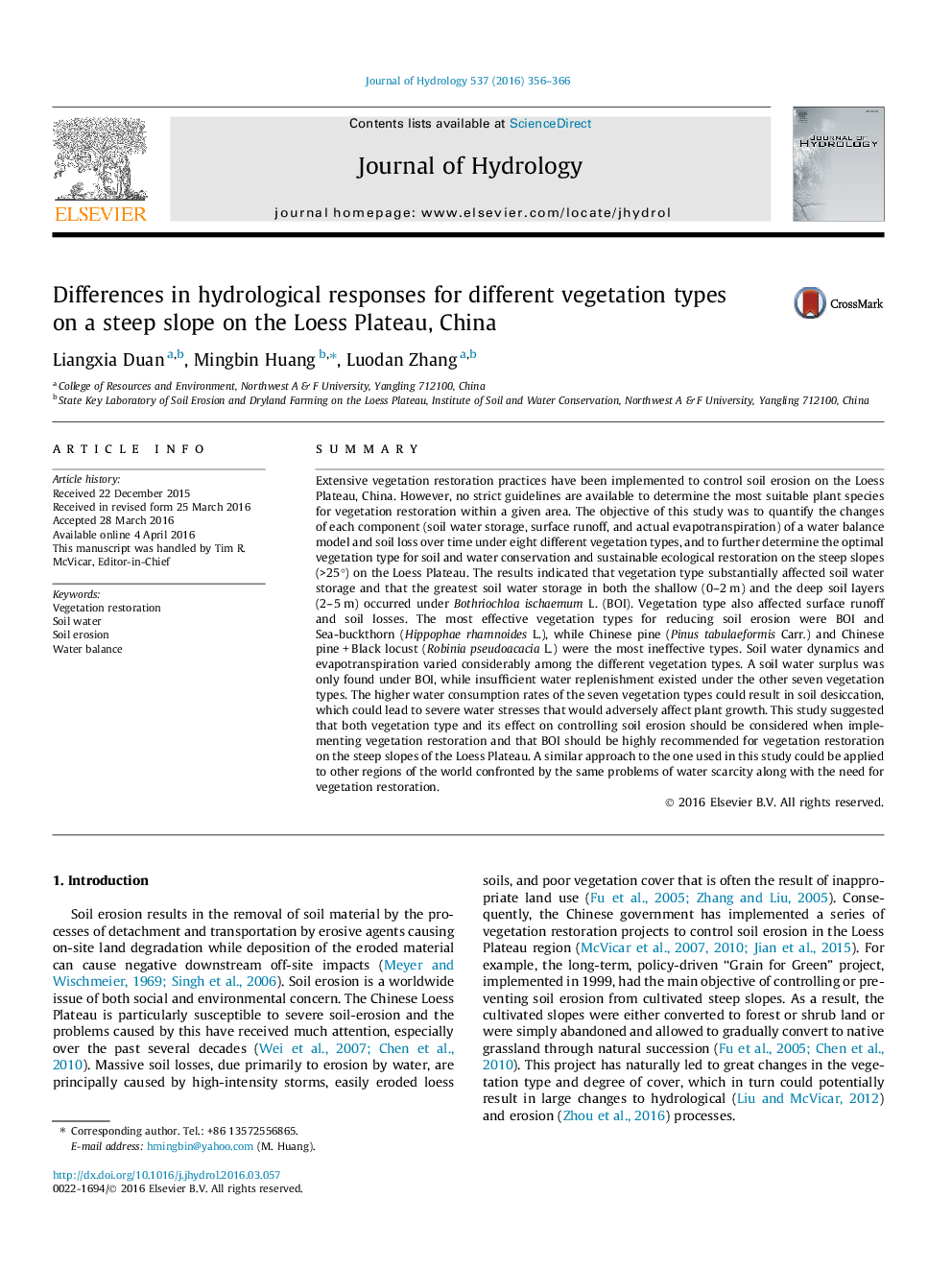| کد مقاله | کد نشریه | سال انتشار | مقاله انگلیسی | نسخه تمام متن |
|---|---|---|---|---|
| 6409807 | 1629915 | 2016 | 11 صفحه PDF | دانلود رایگان |

- Eight vegetation types observed on a steep slope on the Loess Plateau (LP).
- The differences in water balance components quantified under eight vegetation types.
- A soil water surplus only found under Bothriochloa ischaemum L. (BOI).
- The BOI proven the most effective vegetation type for reducing soil erosion.
- The BOI highly recommended for vegetation restoration on steep slopes of the LP.
SummaryExtensive vegetation restoration practices have been implemented to control soil erosion on the Loess Plateau, China. However, no strict guidelines are available to determine the most suitable plant species for vegetation restoration within a given area. The objective of this study was to quantify the changes of each component (soil water storage, surface runoff, and actual evapotranspiration) of a water balance model and soil loss over time under eight different vegetation types, and to further determine the optimal vegetation type for soil and water conservation and sustainable ecological restoration on the steep slopes (>25°) on the Loess Plateau. The results indicated that vegetation type substantially affected soil water storage and that the greatest soil water storage in both the shallow (0-2 m) and the deep soil layers (2-5 m) occurred under Bothriochloa ischaemum L. (BOI). Vegetation type also affected surface runoff and soil losses. The most effective vegetation types for reducing soil erosion were BOI and Sea-buckthorn (Hippophae rhamnoides L.), while Chinese pine (Pinus tabulaeformis Carr.) and Chinese pine + Black locust (Robinia pseudoacacia L.) were the most ineffective types. Soil water dynamics and evapotranspiration varied considerably among the different vegetation types. A soil water surplus was only found under BOI, while insufficient water replenishment existed under the other seven vegetation types. The higher water consumption rates of the seven vegetation types could result in soil desiccation, which could lead to severe water stresses that would adversely affect plant growth. This study suggested that both vegetation type and its effect on controlling soil erosion should be considered when implementing vegetation restoration and that BOI should be highly recommended for vegetation restoration on the steep slopes of the Loess Plateau. A similar approach to the one used in this study could be applied to other regions of the world confronted by the same problems of water scarcity along with the need for vegetation restoration.
Journal: Journal of Hydrology - Volume 537, June 2016, Pages 356-366